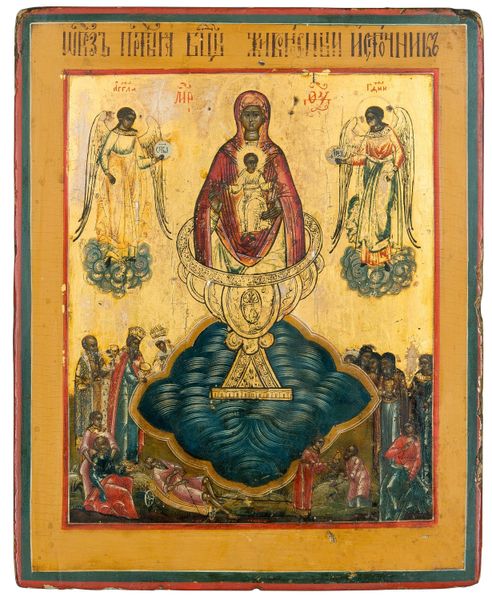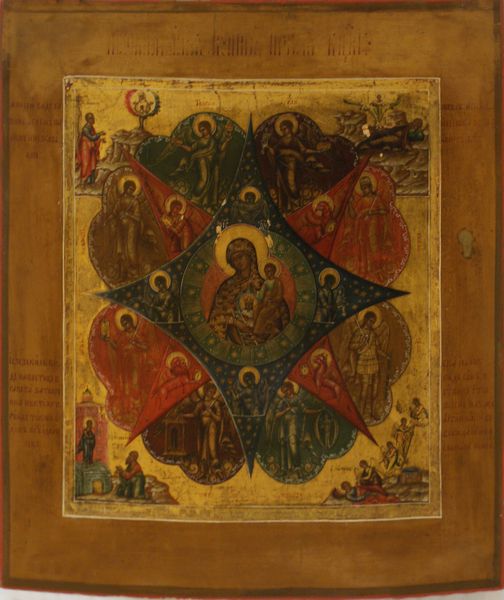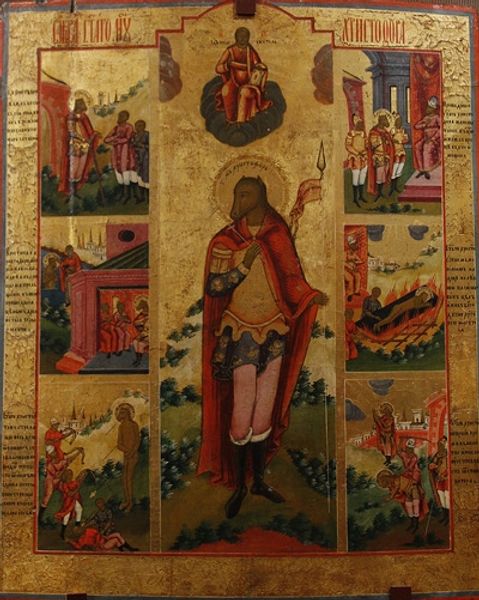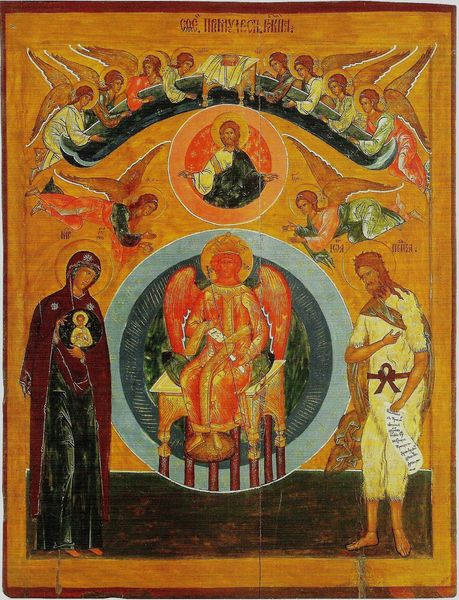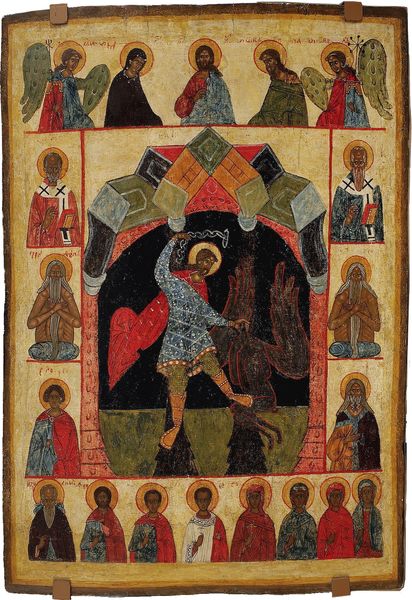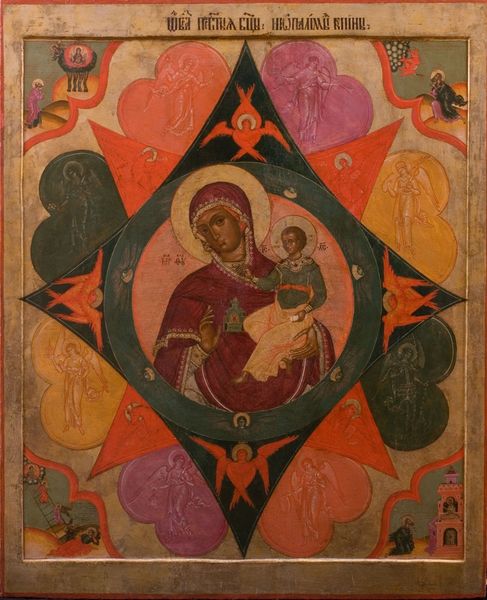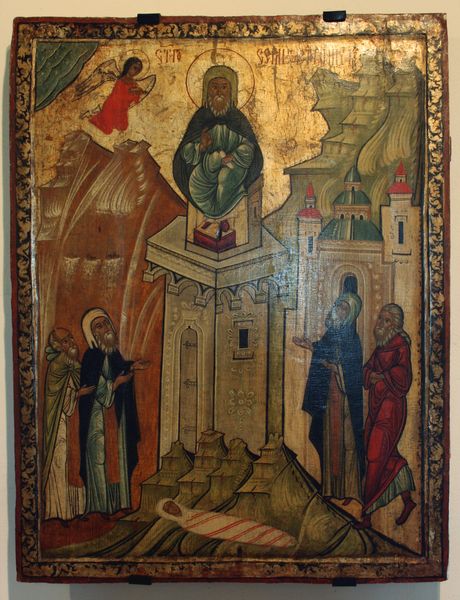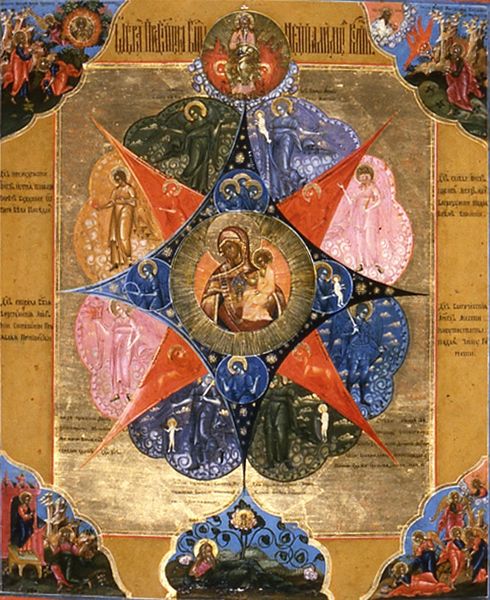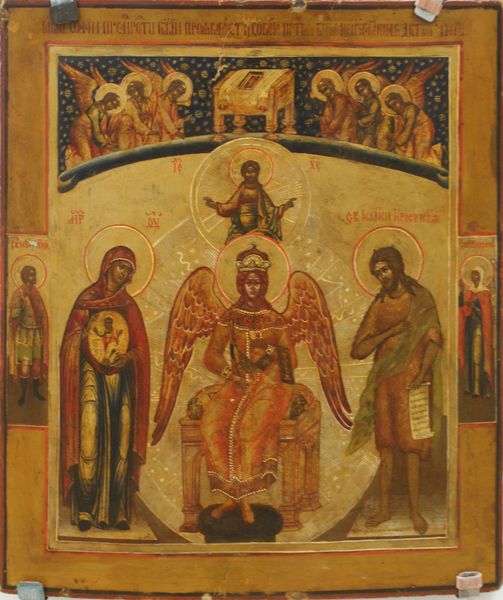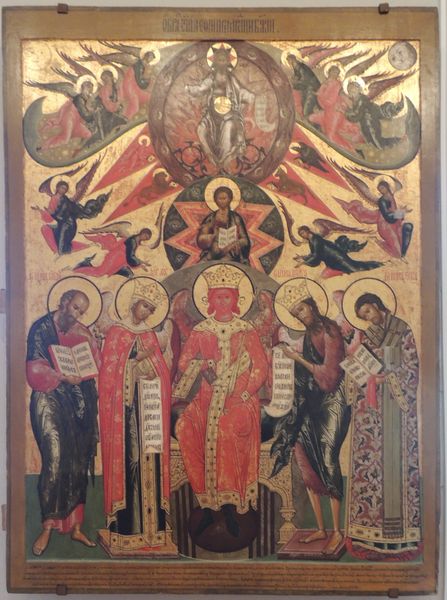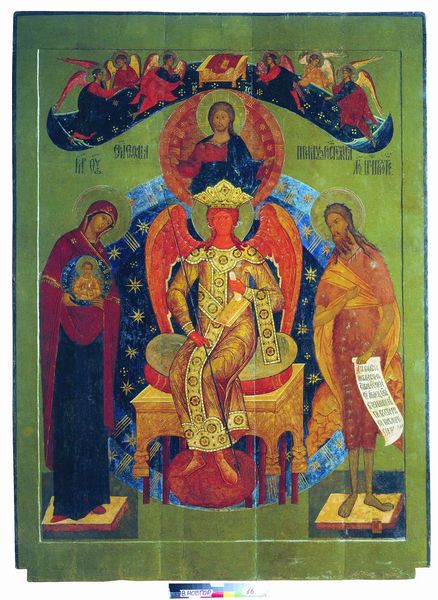
tempera, painting
#
portrait
#
byzantine-art
#
narrative-art
#
tempera
#
painting
#
figuration
#
history-painting
Copyright: Orthodox Icons,Fair Use
Curator: Here we have an intriguing Orthodox icon titled "Our Lady of the Burning Bush," created around 1850. The artist, unfortunately, remains unknown. It’s a tempera painting, typical of Byzantine art traditions. Editor: Well, right off the bat, it feels… intense. Almost feverish. The double star shape really grabs you. It's as if I'm looking through some kaleidoscopic vision. Not sure what to make of it. Curator: It's meant to be a theophany, a visual representation of divine revelation, Editor. The Burning Bush is a reference to the Old Testament story where Moses encounters God in a flame that doesn’t consume the bush. Visually, the two overlapping stars symbolize the divine fire and the Virgin Mary herself. Editor: Ah, the double star... Now I see it. So, it’s this symbol combining earthly matter and divine presence. It is powerful. I'm drawn to the smaller scenes surrounding the central image of Mary and the Christ Child. Who are those figures? What are their stories? Curator: They represent prophets and scenes related to the Virgin, almost a miniature narrative of salvation history. It’s characteristic of icons to layer these symbolic figures. In terms of art and social function, Orthodox icons such as this one, weren’t mere devotional objects, they affirmed collective belief and were integral to a lived religious experience within the community. Editor: I see. So, in the social imaginary of mid-19th century, this artwork plays the critical role in consolidating the local religious community, visually confirming beliefs, reinforcing shared values and collective cultural identity. Still, something about that bold combination of reds, greens, and golds… the overall design pushes it beyond pure functionality. It’s like it’s also trying to ignite a mystical feeling in the observer. Curator: Exactly. Icons aren't just illustrations of stories; they are windows into the divine. Look at how the artist utilizes line and color—everything points inward, toward that central image. And although somewhat damaged over time, there’s an unmissable feeling of awe within this image. Editor: I agree. It’s a complicated image that successfully merges a historical religious narrative and some intense devotional feeling. And considering it was made at such a pivotal period in Russian history, you can't help but wonder how an image like this one resonated in everyday life.
Comments
No comments
Be the first to comment and join the conversation on the ultimate creative platform.

